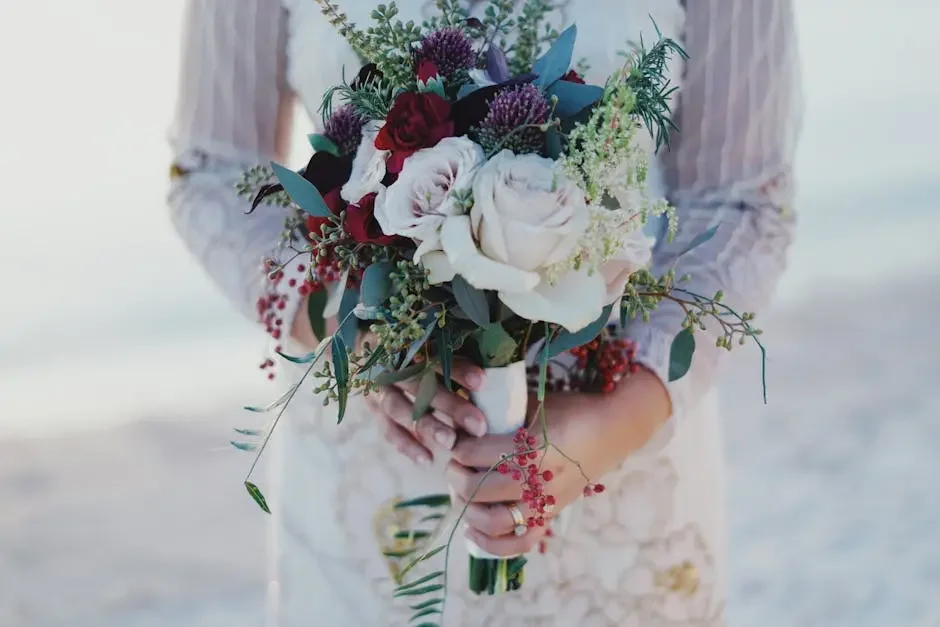The Bride's Guide to Stress-Free Floral Planning
Planning your wedding flowers can feel overwhelming, but it doesn’t have to be. With a bit of organization and some helpful tips, you can effortlessly choose the perfect blooms for your big day. This guide will offer you a friendly hand to navigate the floral planning process with ease and confidence.
Understanding Your Floral Vision
Before diving into floral planning, take time to envision what you want. Consider your wedding theme, colors, and the overall atmosphere you wish to create. This foundational step will guide all your floral decisions.
Once you have a clear vision, it can help to explore different styles of floral arrangements. Think about whether you're drawn to classic, bohemian, or modern designs. Each style can dramatically change the mood of your wedding, so be sure to choose one that reflects your personality as a couple.
Moreover, don’t hesitate to seek inspiration from various sources. Wedding magazines, Pinterest boards, and even nature walks can provide you with fresh ideas to enhance your floral vision. Remember, your flowers should tell your story—make sure they resonate with who you are.
Choosing the Right Flowers for Your Budget
It’s essential to establish a floristry budget early on. Research the seasonal flowers within your price range and prioritize your must-haves. An informed budget will streamline your options and alleviate pressure.
Keep in mind that flowers' prices can fluctuate based on availability and season. Consider using in-season flowers, which are generally more affordable and will still bring you splashes of color and joy. Create a list of flowers you adore, but remain open to substitutes that fit your budget more comfortably.
Consider implementing a few statement floral pieces that won’t break the bank but will still leave an impact, such as altar arrangements or centerpieces. This strategy enables you to make a bold statement without covering every inch in blooms. Balance is key!
Creating a Floral Timeline
Timing is everything in floral planning. Outline deadlines for selecting flowers, contacting florists, and finalizing your arrangements to keep everything on track. A well-structured timeline ensures you won't feel rushed as your wedding date approaches.
To kick off your timeline, aim to select your flowers at least three to four months before the wedding day. This allows ample time for any necessary adjustments and discussions with your florist. Remember, communication is crucial; the more insights you share, the more they can assist you.
As the date approaches, revisit your timeline. Check off key tasks to ensure nothing slips through the cracks. Having a solid plan also alleviates last-minute stress and allows you to focus on enjoying the experience leading up to your big day.
Finding the Perfect Florist
Research potential florists that match your style and budget. Schedule consultations to discuss your vision and gather quotes. Trust your instincts; a good relationship with your florist can ease many worries.
When meeting with florists, be prepared with examples of what you like. This could include pictures of arrangements from other weddings or floral inspirations. A great florist will appreciate your input and will help you refine your ideas into a cohesive plan.
Don't overlook the importance of reviews and referrals. Speak with other brides or friends who have recently planned weddings to gauge their experiences. Your florist should not only be skilled at their craft but also someone who makes you feel comfortable and understood.
Incorporating Personal Touches
Personalize your floral arrangements with meaningful flowers that hold significance for you and your partner. Whether it's a favorite bloom or one that represents a cherished memory, these touches make your wedding uniquely yours.
Consider using flowers from a special moment, like the blooms from your first date or the ones that were present at significant family events. Every time you look at those flowers, you'll be reminded of the love that brought you two together.
Incorporating personal touches can extend beyond just flower selection. Think about how you can craft bouquets that reflect your story, perhaps weaving in ribbons from family heirlooms or using vases that carry sentimental value. The aim is to create a floral experience that resonates deeply with you.
Managing Last-Minute Details
As your wedding day approaches, ensure you have clear plans for the delivery and setup of floral arrangements. Communicate with your florist about any last-minute changes to avoid stress on your big day.
Create a checklist that includes all delivery details and notes on the setup needs. This creates a roadmap for everyone involved, ensuring nothing is overlooked. A little organization goes a long way in making sure your arrangements arrive just right.
Lastly, stay flexible. No matter how well you plan, things can change. A sudden rain shower or a venue hiccup can affect your blooms. Trust your florist to adapt and remember that the ultimate goal is to celebrate your love, regardless of minor mishaps.
Embrace the Beauty of Floral Planning
By following these steps and tips, you can create a floral experience that complements your wedding vision without added stress. Remember, the key is to have fun and let your personality shine through your floral choices. Happy planning!

